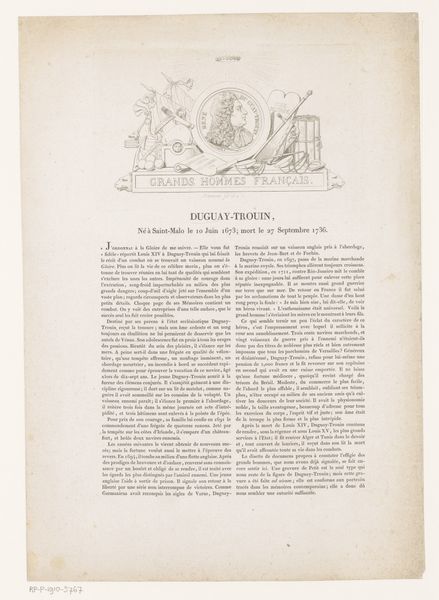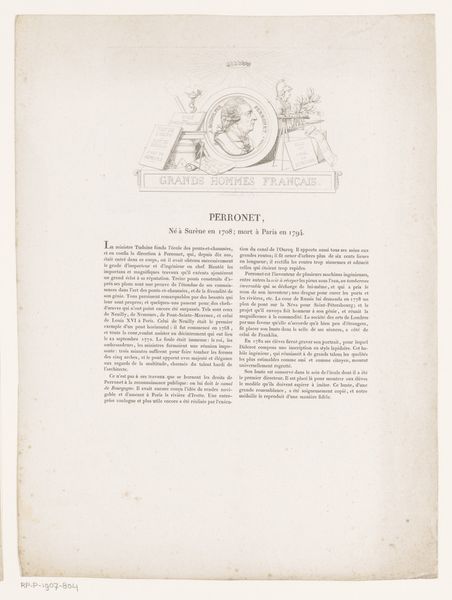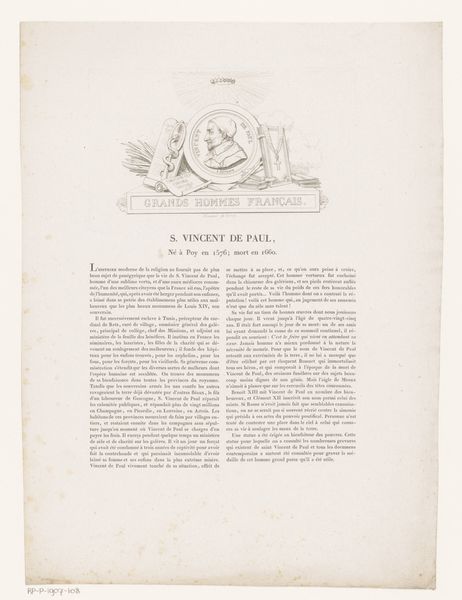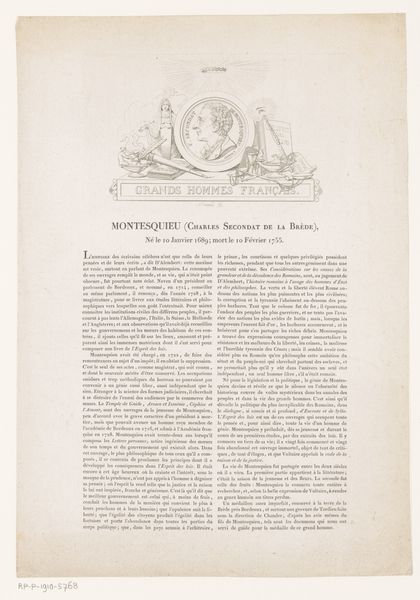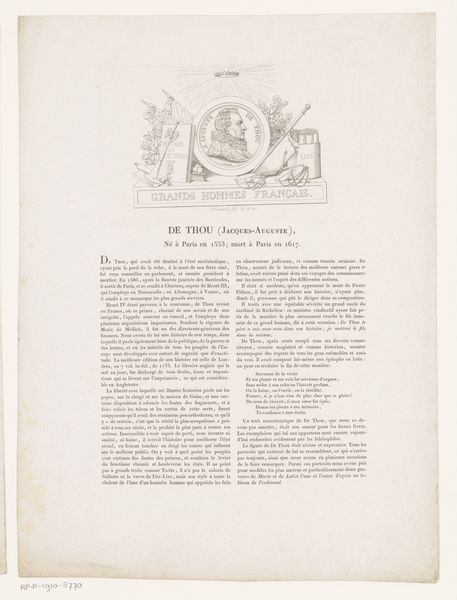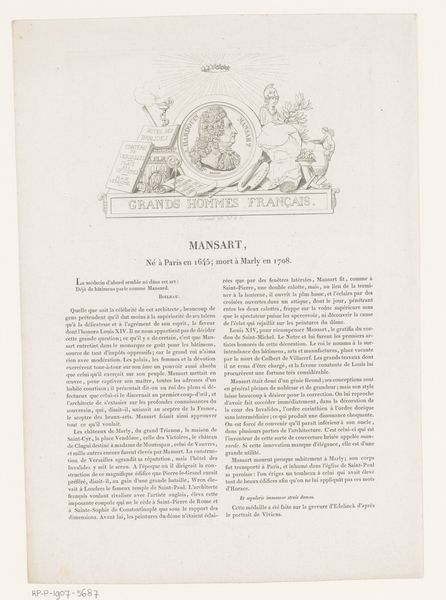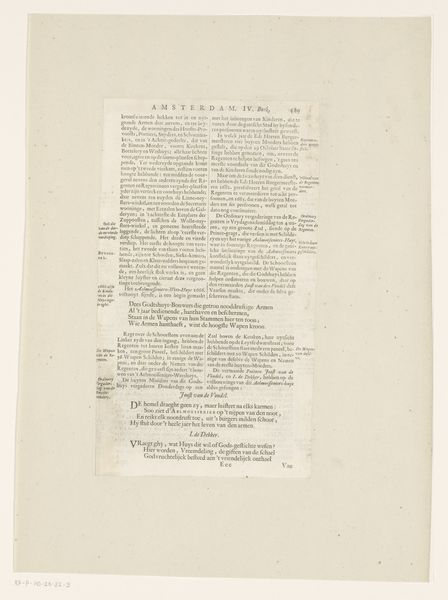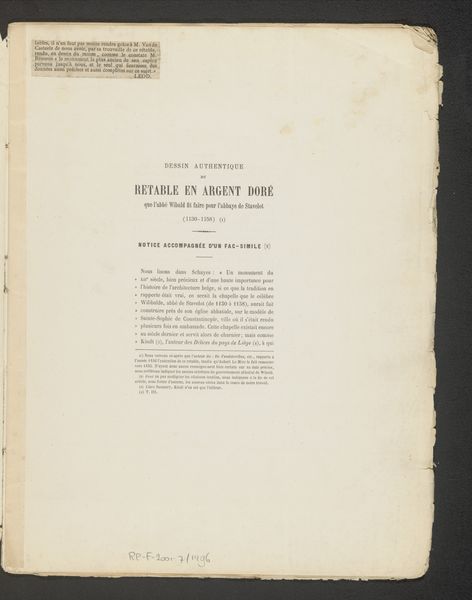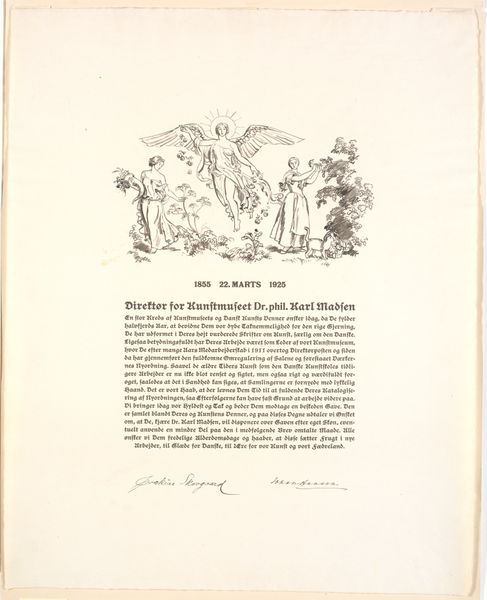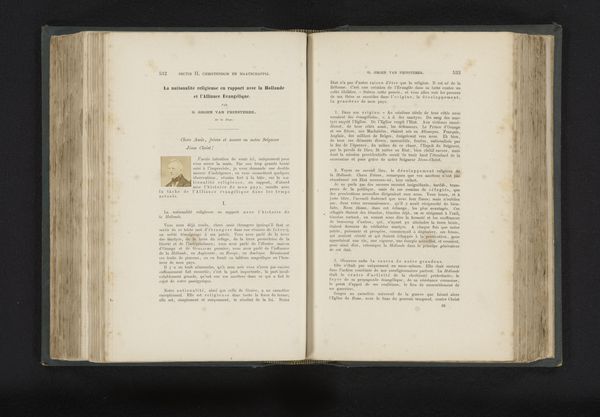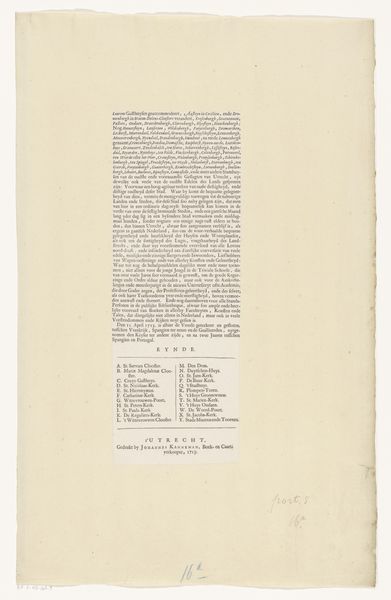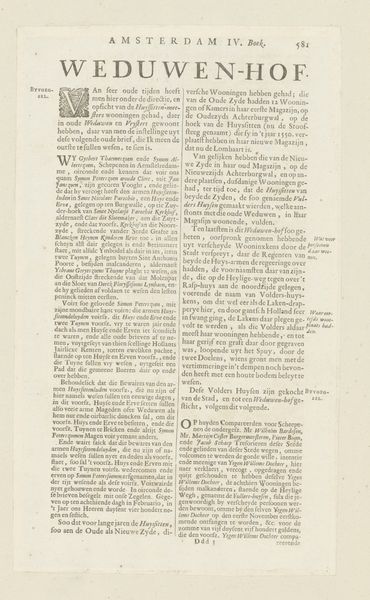
graphic-art, print, paper, engraving
#
portrait
#
graphic-art
#
neoclacissism
#
ink paper printed
# print
#
old engraving style
#
paper
#
engraving
Dimensions: height 102 mm, width 167 mm, height 357 mm, width 265 mm
Copyright: Rijks Museum: Open Domain
Curator: We’re standing before "Portret van François de Chevert," a print made by Louis Marie Normand sometime between 1816 and 1826. It’s part of the Rijksmuseum collection. Editor: Immediately, I'm struck by this sense of… formality, but also frailty. It’s very delicate, isn’t it? The portrait itself is so contained, almost floating above all this text. Curator: Yes, Normand crafted this as an engraving, a testament to the Neoclassical style, part of a series titled "Great Frenchmen." We have the image, framed by weapons and trophies. Editor: Those grand Frenchmen always looked good amidst piles of weaponry! It reminds me of ornate banknotes or stamps, these symbols of power. I imagine it was to inspire some kind of patriotism. I can almost hear the drums rolling! Curator: Indeed! The arms around the portrait act as visual cues, emphasizing Chevert’s military achievements and evoking ideals of honor. He served in many notable military campaigns. Editor: I suppose it’s intended as a commemorative, perhaps with a lesson for future generations? The inscription 'Great Frenchmen' says it all, really. I am not well versed in French to read what is said below! Curator: Absolutely, it serves as a cultural memory device. Chevert as a visual icon is forever connected to his place in the Grand Narrative of the Nation. Editor: Looking closely, there is the soft grey that comes with engravings. A melancholy softness despite its initial display of strength. It does make me reflect about glory being as fragile as paper in time. Curator: Precisely. In its time, print media offered accessible and replicable ideals of excellence, allowing the proliferation of particular virtues for citizens to emulate. Editor: And today we consider the same piece within a completely different cultural setting… and as visitors looking at an art, hopefully we take a moment to think about those different settings. Curator: Yes, from its initial message about power, the artwork remains resonant in its new museum setting to explore shifting values around national heroes, violence, and collective identity.
Comments
No comments
Be the first to comment and join the conversation on the ultimate creative platform.
